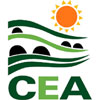English version
CONTACTS
Jazzo Gattini/Masseria Radogna (Contrada Murgia Timone – Matera)
S.S. 7 Taranto Direction Km 583
Phone: 0039 835 332262 Mobile: 0039 388 8925407 Mail: info@ceamatera.it
MATERA AND THE MURGIA MATERANA PARK
In the Basilicata region, Matera and the Murgia Materana Park are designated UNESCO sites since 1993. The Gravina is a spectacular gorge carved into the rocky plateau of the Murgia materana. Perched on its upper slopes are the Sassi, the oldest parts of the town of Matera. Matera’s Centro di Educazione Ambientale (CEA), based in two old rural buildings, is the ideal starting point for tours and walks exploring the natural and archaeological treasures of the Murgia and the Gravina.
It’s open every day of the year to welcome you and provide all you need for tried and tested itineraries.
We’re looking forward to meeting you here at the CEA, where we can help you get to know and love Matera and the Murgia materana Park.
HIGHLIGHTS OF THE AREA
• Jazzo Gattini (visitors center)
Typical fortified sheepfold of the Murgia dating 19th century.
• Masseria Radogna (educational center and campsite)
Rural residential construction from the middle of the 19th century located between characteristic dry stone walls and almond and olive trees.
• The Neolithic Village
It keeps the remains of the housing, work related building and sepulchral structures of the people who inhabited the Murgia between 7000 b.C.and 3700 b.C.
• The Gravina of Matera
This nature preserve of the Park it’s a spectacular canyon 230- 260 foot deep which crosses the entire Park.
• The rock hewn churches
The various churches are different from each other in architecture and iconography. They narrate the story of the Middle Ages when the Greek-Byzantine culture met with the Latin one here in Matera.
TO VISIT THE PARK
The Murgia Materana is a broad limestone plateau stretching from Matera to Montescaglioso, marked by deep ravines.
The largest of these is the Gravina di Matera, with its spectacular view of the Sassi, the oldest parts of the town, from the area known as Murgia Timone.
There is a parking area and panoramic viewpoint on the murgia, about 1.5 km from the CEA.
But the best views are those from the footpaths.
The Gravina conceals whole villages first excavated in the soft stone in prehistoric times and even more populous in the Middles Ages, as the rock churches testify. Anyone can enjoy walking along the paths on the murgia plateau, above the steeper slopes of the ravine, with a little attention where there are stones and gravel, uneven steps and exposed stretches.
The footpaths in the ravine itself are comparable to mountain paths, not suitable for anyone who suffers from vertigo. In any case, you should wear comfortable shoes with rubber soles, and we advise you to visit the Park with one of our authorized Guides who also have the keys to the Murgia Timone rock churches, locked to protect their fragile treasure.
THE BELVEDERE PATH (GUIDED TOUR)
This is a guided circular walk of just over 2 hours following a fascinating, scenic route.
It winds along the slope of the Gravina opposite the Sassi, taking in a number of caves and rock churches.
The terrain isn’t particularly difficult and you don’t need to be a seasoned hiker: just wear comfortable walking shoes. When you get back to the CEA, we’ll offer you a taste of some of the extraordinary specialities made by local producers.
POINTS OF INTEREST
Jazzo Gattini, Masseria Radogna, the Neolithic village of Murgia Timone with its Bronze and Iron Age necropolis, the Gravina, the rock churches of the Madonna delle tre porte, the Madonna delle Croci, San Falcione, Sant’Agnese, San Vito and San Nicola alla Murgia dell’Amendola.
JAZZO GATTINI
The economy of the murgia has always been based on livestock. Jazzo Gattini is a typical 19th century fortified fold, used as a shelter for migratory herds until recently. Worth noting are: the internal enclosure, which is on a slope so that rainwater and liquid manure drain away; the large livestock barn, which follows the irregular surface of the rocky outcrop; opposite this, the casone, a room where herders lodged and also where cheese was made; and the guttering which channels rainwater into an underground roofed cistern outside the jazzo.
It is now one of the two buildings of the Mario Tommaselli Centro di Educazione Ambientale (CEA), the visitor centre of the Murgia materana Park.
MASSERIA RADOGNA
Surrounded by dry stone walls and almond and olive trees, this is a typical farmhouse dating back to the mid 19th century. Though it was abandoned long ago, some of the signs of past agricultural activities can still be seen in the cellars and around the building (cisterns, livestock barn, hay loft, manure pit, henhouse, enclosures for sheep and goats). Today, the enclosures are home to an impressive collection of spontaneous medicinal and aromatic plants, part of the Park’s remarkable botanical heritage. A pit located underneath the main courtyard, over 15 metres deep, was excavated for the tufa stone needed to build the Masseria. The cellars were used as the film set for the house in Nazareth in ‘The Passion of the Christ’ directed by Mel Gibson. The Masseria is now part of the CEA.
THE NEOLITHIC VILLAGE
This consists of remains of the homes, workshops and tombs of populations who lived on the Murgia from 7000 to 3700 years ago. The village is fortified by two adjoining ditches dug into the limestone, a circular one on the east side of the settlement and a larger, oval one to the west. Access to the eastern sector was protected by a particular formation of the ditch known as a ‘lunette’. The rock surface in the eastern sector, cleared of earth, is pitted with holes: the smaller ones held supporting posts for the huts while larger ones were used for food storage or burials. During the Bronze Age, when the settlement had been abandoned, three underground cave tombs were excavated. At the largest of these, located close to the western entrance to the village, a straight passage leads through two concentric circles of stones and down to the central underground chamber. The mysterious layout suggests some solemn prehistoric rite, but archaeologists and scholars have yet to decipher its meaning.
SAN FALCIONE
Rock churches excavated in the 9th and 10th centuries generally conformed to a Byzantine model, having a rectangular or square chamber with plain walls and behind this two arched presbyteries supported by a central pillar. The rock church of San Canione, better known as San Falcione, is no exception. Attributed to the earliest Italo-Greek monastic communities which settled in the area around the 9th century, it’s one of Matera’s oldest rock churches. Located in a small ravine, it’s easily recognised thanks to the perimeter wall built in the 19th century by the noble Gattini family, who used the cave complex as an enclosure for sheep and goats. Inside the church, where the floor is now lower than its original level, there’s a fresco of Saint Nicholas on the central pillar and one of a bishop saint on the right-hand wall. Still on the right, in the altar recess, there was once an extraordinary fresco of the Presentation of Jesus in the Temple: Joseph, Mary and the Child were clearly visible, along with Saint Simeon and the prophetess Anna who blessed Jesus with one hand while the other held a missive with words ‘This Child created heaven and earth’ in Greek. Many small cavities excavated around the church are the remains of a medieval apiary.
SAN VITO ALLA MURGIA
In a splendid scenic position overlooking the Sassi and the Gravina, this crypt, like San Falcione, has two presbyteries behind a single nave. The right-hand one, longer than the other, has three frescoed apses or recesses in its back wall. Two more symmetrical recesses are cut into the side walls. Behind the altar, detached from the wall, is a hidden tomb, and on the ceiling a small dome carved in concentric circles. Outside, there’s a cave, a water-storage cistern with a domed roof and several arched recess tombs. This was the location used for Christ’s tomb in Pasolini’s film “The Gospel According to Matthew”.
SANT’AGNESE
This church has a rectangular chamber with simple recesses in the walls, separated from the presbytery by a round arch with a cornice. Particularly interesting is the cistern to the left of the church and the groove carved into the rock to channel rainwater into it from the plain above. On the plain and connected to the watercourse is a basin first used for pressing grapes and later for purification of the water by decantation.
MADONNA DELLE TRE PORTE
Following the collapse of the entrance, only two of the original three naves with paired apses are visible today. There are several important frescoes: a Christ on the throne, a 15th century representation of a Madonna of the Sweet Kiss, and on the back wall the remains of an extraordinary 13th century Madonna Enthroned and an Annunciation dated to the 15th century. Parts of the frescoes were removed in 1962 by a German scholar, professor Rudolf Kubesch. The many crosses etched into the walls as signs of devotion are a testament to the religious standing of this church.
MADONNA DELLE CROCI
Particularly important from an architectural viewpoint, it has a single nave divided by a broad, transverse arch and a low parapet. Numerous crosses are carved into the walls. One of the finest frescoes of all the rock churches is to be found here, a typically Byzantine depiction of the Madonna seated on a throne with the infant Jesus and the archangels: an inscription in Greek letters reads ANGELUS GABRIEL – ANGELUS RAFAEL. The ceiling is decorated with a cross-vault and equilateral and Greek crosses in relief.
SAN NICOLA ALLA MURGIA DELL’AMENDOLA
This church is located in the remains of a complex farming settlement dating back to the Bronze Age. It was originally larger and shaped like a Greek cross. The façade has collapsed but the skilful sculpting of the arches, apses and pillars is still evident. The chamber at the back of the church, excavated when it was no longer used for religious purposes, is etched with various figures such as doves, animals and a soldier. The remains of an ancient apiary can be seen to the left of the church, enclosed by an impressive dry stone wall. In the caves opposite, on the other side of the road, are the ruins of another church with an arched entrance, two recess tombs and several crosses carved into the walls. Over the centuries a feeding trough and a roof hatch have been added.













